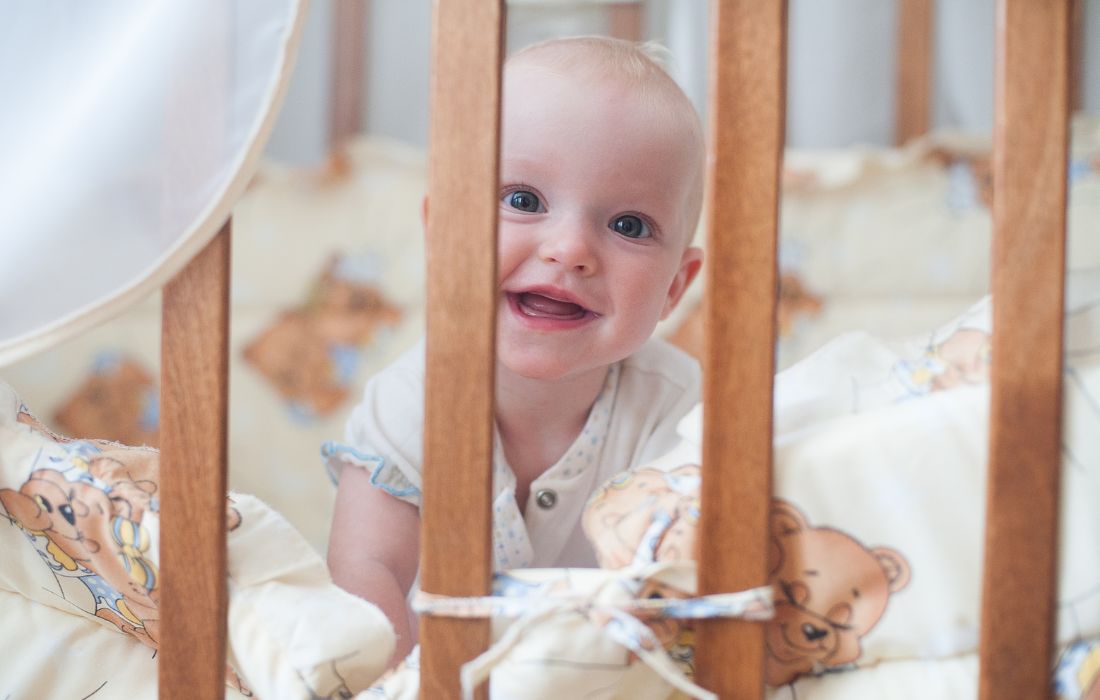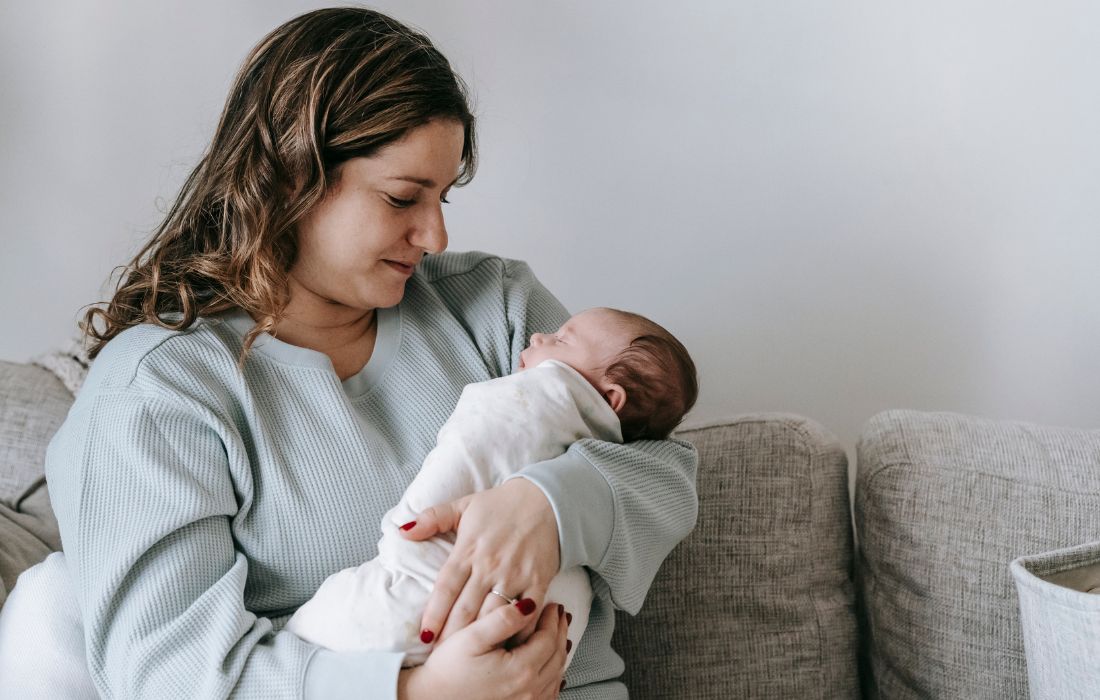The Sleep Lady’s Proclamation: The Ideas and Beliefs That Are the Bedrock of Her Gentle Approach
Because I want the Sleep Lady books to mimic what it’s like to work with one of the Gentle Sleep Coaches I have trained in the Sleep Lady method, so you can reap all the benefits of the Sleep Lady system, I would like to share the ideas and beliefs that have become the bedrock of my gentle system.
As I mentioned, you can only adopt a set of ideas and make it your own if there is a transparency and understanding of the philosophy that lies behind it. That’s the only way you can know if it is right for you. I believe parents need to know the method behind my madness if they are to quickly grasp and implement the strategies set forth in this book. So with that said, here is the short list of what I believe makes for a successful sleep-coaching strategy.
I believe sleep coaching is subjective
To the extent that you get advice, whether from doctors or well-meaning friends or relatives, it usually falls into one of two categories. On one hand are the variants of cry-it-out. On the other are the attachment parenting theorists, who promote co-sleeping and nursing on demand well past the early months of infancy.
Either of those approaches is fine—if they feel right for you and right for your kids. They aren’t fine if they don’t feel right, if they strain your marriage, if they don’t fit into your adult needs—or if they don’t help your child learn to put himself to sleep and stay asleep. Your subjective needs and beliefs count. You can get creative, you can be more responsive and less reactive, and there is definitely an opportunity for more balance.
The Sleep Lady approach is a gentler alternative for families who emotionally or philosophically resist letting their babies cry it out, feel judged for their ideas on how to sleep coach and raise their children, tried “Ferber-izing” with no success, and let their child cry it out completely but found it didn’t help. I have also worked with families who believe in co-sleeping but find that their children aren’t really sleeping all that well, even nestled snugly with Mom and Dad. And I’ve helped guide many families who did bed share for a few months or a few years but now want the family bed to revert to a marital one.
I believe sleep is highly personal, and therefore, so is sleep coaching
Anyone who has ever shared a bed or a room with someone—a sibling, a college roommate, a partner—can attest that there isn’t just one way to sleep. Some of us kick off the blankets in our sleep, while others have the thermostat down to arctic temperatures. Some fall asleep at the drop of a hat (I hate them), while others—like me—need to quiet the mind before even thinking about sleep. Some like the room as dark as an Alaskan winter, while others prefer to wake up to natural sunlight.
Sleep preferences and styles range widely and affect everything from the kind of mattress we prefer to whether we have the talent of being able to sleep on a plane (I wish I had that talent) or the kinds of aesthetics we would like in our sleep space. If this sleep subjectivity is a fact for us, then why should sleep be any different for our babies?
Some families want their children to sleep on Montessori floor beds, while others have siblings sharing rooms. Other families are passionate about co-sleeping, but still need advice on sleep training, and the preferences vary in infinite measure.
Therefore, when I work with families, I explore their values, lifestyles, and approaches to parenting as I develop an individual sleep plan. In this book, you will have the opportunity to do the same exploration, which will help you feel in control of how you sleep coach your child. I never suggest anything that would make anyone feel like a horrible parent, nor do I believe in miracle cures and no-cry techniques, simply because they unfortunately don’t exist.
When we go to change a pattern or behavior and our babies are nonverbal, they will cry and not understand the change—and if they are verbal, they will cry and have words of protest. Changing sleep patterns can take time, and it definitely takes consistency. Most families solve their bedtime problems within two weeks, even if poor napping, early rising, and occasional night awakenings take a little longer. The bottom line is I believe parents should have choices in sleep coaching. The choices shouldn’t be simply between cry-it-out or suffer for months or years.

I believe that, generally, six months is the optimal time to start sleep coaching
Don’t worry if you didn’t start at six months or you yourself weren’t ready to stick to it. As you can see, the Sleep Lady approach gives age-by-age instructions on bedtime, nap time, early rising, and sleep-related developmental changes all the way to age five.
But with very rare exceptions, we don’t sleep coach before six months because babies just aren’t ready. That doesn’t mean we don’t start very gentle “sleep shaping” with newborns.
Babies have intricate, delicate, and rapidly changing development patterns that cannot be dismissed when considering how they learn to sleep. In the chapters that follow, you will find a milestones chart that explains what is happening developmentally and how each stage can cause nighttime sleep and nap regressions. Milestones are skills, like self-regulation and soothing, and the things babies learn to do by a certain age—like focusing their vision, reaching out, exploring, and learning about the things around them. For now, here are a few things to consider about infant sleep before the age of six months.
* Infant sleep cycles do not yet resemble those of adults, so making allowances for our babies makes sense.
* Babies before the age of four months have not yet established a circadian rhythm (i.e., their internal clock).
* Before three or four months, babies do not produce melatonin, a hormone that promotes sleep by relaxing our muscles and making us drowsy. Secretion levels of serotonin are linked to darkness, another aspect of our circadian rhythm.
* As a family therapist, I do not recommend extinction (the cry-it-out method) or gradual extinction with newly adopted children, children in foster care or placed in new homes, and children with special needs. I find the parental fading of the Sleep Lady Shuffle to be more effective with these children who may have challenges self-regulating.
I believe in empowering parents to be confident
Douglas Teti, professor of human development and psychology at Penn State, has led a study about a parent’s state of mind, published in the Journal of Family Psychology, based on videotaped footage of families in their own homes.
It revealed that a parent’s emotional state may be a hugely important contributor to healthy infant sleep. “What parents do at bedtime doesn’t seem to matter as much as how they do it. So you can decide to co-sleep or not co-sleep or you can decide whatever bedtime routine you want to follow. That seems secondary to whether or not parents are feeling good and comfortable with what they’re doing.”
Though Teti’s study of mothers was small, his findings suggest that even if I give you every sleep trick in the book and you devour the pages of this one, it is your confidence in yourself as a parent, combined with your faith that your child can learn the skills vital to falling asleep, that will help you succeed. We’ll discuss more on what Teti says about “emotional availability” of parents during bedtime routines (and frankly at all times) in Chapter 3.
I believe in making friends with your baby’s tears (and toddler’s tantrums)
We’ve all heard the adages “Make friends with your fear” or “Understand your enemy,” and we can put these to good use when our babies cry or our toddlers throw a tantrum. So many parents are frightened by those cries, and when they can’t stop them, those tears do indeed feel like their hearts are shattering into a million little pieces. However, it’s easier for us as parents to tolerate the tears if we understand that they are a form of communication—just in a preverbal language we are not versed in.
I believe in responsive parenting
Responsive parenting allows for the balance between assisting your baby and letting your baby figure it out for himself: responding to a child’s cry is, in my opinion, non negotiable when sleep coaching, both for his sake and for your own peace of mind. As parents, we need to be sure they are okay, that they haven’t spit up or gotten tangled in something, that their diapers haven’t leaked, or that they weren’t spooked by a sound or shadow. But I also believe that balance between comforting our children and allowing them to learn to comfort themselves is an essential component of sleep coaching. The Sleep Lady Shuffle is designed to minimize frustration and maximize reassurance. By being present and emotionally available, by confidently offering physical and verbal caresses and reassurances, we reduce stress on ourselves and on our children. And where there is stress, there is cortisol (a hormone), and cortisol is no good for sleep!

I believe that setting limits and boundaries makes for happy and securely attached children (who also sleep better)
Parents tell me that they are hesitant about providing structure and direction; they are nervous about enforcing rules or confronting negative behaviors. I often hear a parent say, “I don’t want my child to feel bad about himself,” or “I don’t want to crush her spirit,” or “I don’t want my child to not like me.”
As my colleague Peter Grube, a clinical social worker, notes to me, “Parents want to be loving, but unfortunately, the term loving is often interpreted as meaning no boundaries for the child or parent.”
Countless studies tell us that our children do need structure, consistency, and clear boundaries, at bedtime and during the day. Setting limits does not mean that we don’t give our children some choice or autonomy. Rather, it means giving age-appropriate choices within healthy boundaries—boundaries that actually make children feel safe and protected. In the age-specific chapters in Phase 2 of this book, I will give you advice and strategies for your child’s sleep to do just this. As a family therapist who has counseled parents on an array of issues, I cannot stress enough how learning to set boundaries and limits during sleep coaching will come in handy later when child-rearing extends into other areas of life. When children get a little older, boundary setting and setting limits throughout the day—and not just at bedtime—will be essential to sleep coaching.
I believe in informed choice
Parenting isn’t a one-size-fits-all job, nor is it something we do solely based on blind recommendations, marketing campaigns, or opinions of professionals we’ve never met, even the Sleep Lady. We can of course gather the information at hand, weigh its potential benefits, relevance, risks, and lifestyle implications related to our family’s needs, and make an informed choice that is consistent with our own values. This couldn’t be truer when it comes to sleep coaching. All the research, proven theories, product reviews, and sage advice in the world will not match what your instincts say to you about what is right for the needs of your child and your family. Informed choice coupled with your unique parenting philosophies equals a consistently happy, well-rested, and thriving family. If something works for you, even if it isn’t the most popular or glamorous approach to parenting—you will likely stick with it, and that is the key to sleep coaching.
I believe in being kind to yourself
It has become common today to compare ourselves and our families to idyllic snapshots posted on social media. I cannot tell you how many people have confided to me that they
believe themselves to be among the minority when it comes to having a baby who just won’t sleep. Trust me—this is not the case, and you are not alone. Just because your friends are posting pictures of blissfully sleeping infants does not mean that their kids aren’t fussing and waking just as much as yours are—in the photos that don’t make it onto social media.
My experience working with parents all around the world tells me that more parents than not struggle. They don’t know that things can be better or know where to turn for help . . . or feel they will be judged for wanting to sleep coach their child because they are barely hanging on. I understand how desperate exhausted parents can feel—and luckily, the Sleep Lady Shuffle can offer you non-desperate solutions. But please try to understand that you didn’t do anything “wrong.” Be kind to yourself—we are all doing the best we can as parents. And have faith that you can improve your family’s sleep!




